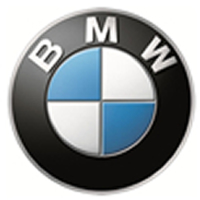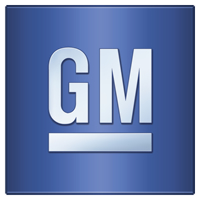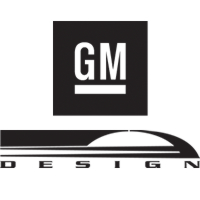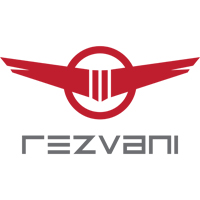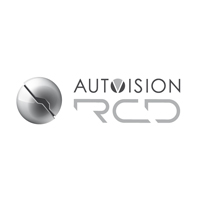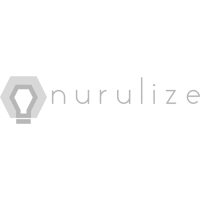The name MBUX for the new infotainment system signals that the user experience (UX) is in the forefront. A unique feature of this system is its ability to learn thanks to artificial intelligence. MBUX can be individualized and adapts to suit the user. It thus creates an emotional connection between the vehicle, driver and passengers. At the same time updates “over the air” are possible. It also heralds a new era at Mercedes me Connectivity.
Further strengths include the high-resolution Widescreen Cockpit with touchscreen operation, navigation display with augmented reality technology plus intelligent voice control with natural speech recognition, which is activated with the keyword “Hey Mercedes”.
MBUX is used in the entire new compact car generation from Mercedes-Benz and will enter series production in spring 2018 in the new A-Class hatchback for select markets outside the U.S., and the 2019 A-Class Sedan that launches in late 2018 in the U.S. Its highlight is the comprehensive touch operation concept – the combination of a touchscreen, touchpad on the center console and Touch- Control Buttons in the steering wheel. In addition to the intuitive operating experience, less driver distraction is another advantage.
In addition, at the exhibition stand in Las Vegas Mercedes-Benz will present the Mercedes-Benz Concept EQA, the smart vision EQ fortwo and the Mercedes- AMG Project ONE as well as the pre-series model of the Mercedes-Benz GLC F- CELL, a fuel-cell- and battery-powered electric vehicle.
With the Concept EQA Mercedes-Benz is demonstrating how the EQ strategy can be transferred to the compact class. Featuring one electric motor on the front axle and one at the rear, this electric athlete has a system output of over 200 kW. The drive characteristics can be altered by varying the permanent all- wheel drive’s front to rear torque distribution. The Concept EQA shows which drive program has been selected on a unique virtual radiator grille.
With the Mercedes-AMG Project ONE, the performance and sports car brand is presenting a super sports car with formula 1 hybrid technology for a breath- taking driving experience. The smart vision EQ fortwo embodies an intelligent solution for urban mobility of the future – electric, autonomous, and without a steering wheel and pedals.
Moreover, Las Vegas is also the final stop of the “Intelligent World Drive”, with which Mercedes-Benz has tested automated drive functions on all five continents.
On the last stages in California and Nevada, the test vehicle collected valuable information specific to the USA for the further development of the driver assistance systems. The automated test drives in the greater Los Angeles area, and subsequently to the Consumer Electronics Show (CES) in Las Vegas, concentrated on the assessment of driving behavior in dense city traffic and on highways. The focus was especially on the recognition of school buses and country-specific lane markings, driving lanes and speed limit signs. In addition the innovative DIGITAL LIGHT system was tested.
Long version:World premiere at CES: MBUX – A completely new user experience for the new compact cars
A revolution in the cockpit: Taking center stage in the Mercedes-Benz presence at the Consumer Electronics Show in Las Vegas (CES; 9 – 12 January 2018) will be the world premiere of the intuitive and intelligent multimedia system MBUX – Mercedes-Benz User Experience. It will enter series production in 2018 in the new A-Class. New services from Mercedes me will also be available.
The name MBUX for the new infotainment system signals that the user experience (UX) is in the forefront. A unique feature of this system is its ability to learn thanks to artificial intelligence. MBUX can be individualized and adapts to suit the user. It thus creates an emotional connection between the vehicle, driver and passengers. At the same time updates “over the air” are possible. It also heralds a new era at Mercedes me Connectivity.
Its further strengths include the high-resolution Widescreen Cockpit with touchscreen operation, navigation display with augmented reality technology plus intelligent voice control with natural speech recognition, which is activated with the keyword “Hey Mercedes”.
MBUX is used in the entire new compact car generation from Mercedes-Benz and will enter series production in spring 2018 in the new A-Class hatchback for select markets outside the U.S. and the 2019 A-Class Sedan that launches in late 2018 in the U.S. Its highlight is the comprehensive touch operation concept – the combination of a touchscreen, touchpad on the center console and Touch-Control Buttons in the steering wheel. In addition to the intuitive operating experience, less driver distraction is another advantage.
MBUX is a further step in redefining Modern Luxury in the compact class. The new A-Class breaks new ground, starting in the interior. The unique architecture is particularly marked by the avant-garde design of the dashboard and is a unique feature in this segment.
There is a low-lying body in this open interior architecture. This so-called wing shows the sheer appreciation of form with its powerful and full volume.
The wing shape also appears to float since there are no connection points or transitions to the surroundings. The so-called moat allows the wing body to float to the main body of the dashboard and is also the source of scattered light for indirect lighting. This makes for very special ambience lighting: indirectly lit from below, it illuminates the main body in a similar way to the night-time illumination of a historic building.
Management: “Mobile assistant with artificial intelligence”
“New technologies must focus on the people using them and make their life simpler. That’s why we combine intuitive and natural operation with intelligent and learning software in MBUX”, says Ola Källenius, Member of the Board of Management of Daimler AG responsible for Group Research and Mercedes-Benz Cars Development.
Intelligent systems such as MBUX are also the basis of all four strategical CASE fields. CASE – these letters will shape the future of mobility. They stand for the fields of networking (Connected), autonomous driving (Autonomous), flexible use (Shared & Services) and electric drive systems (Electric). The four CASE fields are an integral part of the corporate strategy.
“With MBUX we have come another step closer to turning the vehicle into a mobile assistant”, emphasizes Sajjad Khan, Vice President Digital Vehicle & Mobility at Daimler. “The system’s ability to learn is spectacular, and unique to date in the car industry. We are using artificial intelligence to give the user individual suggestions based on their habits. The algorithm we use for this is optimised for on-board use in the vehicle and exploits the opportunities afforded by the latest chip generation.”
“With the new MBUX generation, we are transporting our user interface design into the digital world”, says Gorden Wagener, Chief Design Officer Daimler AG. “We are thus transferring intelligent technology into an emotional overall experience. ”
Design: Intuitive operating system for more safety and comfort MBUX is a revolution of the User Experience in the car. Emotively appealing showcasing features underline the comprehensibility of the control structure and thrill through brilliant 3D maximum-resolution graphics which are rendered, i.e. calculated and displayed, in real time.
The operating system on the free-standing Widescreen Cockpit comprises three levels with increasing information density:
On the first level you find what is known as the Homescreen. This is where, alongside the freely selectable main applications (e.g. telephone, navigation and radio), the most important information (such as arrival time, song currently being played etc.) is displayed.
The next level – the Basescreen – with the display and controls for one main application respectively, such as Media and Navigation, is only one step away. The most important information and control options respectively are attractively presented at this level. Important functions such as destination or music search are grouped at the bottom edge of the screen.
For seldom-used information and settings there is the Submenu on the final level.
Operation is horizontal and makes optimum use of the widescreen format of the display. As on a stage a space is created which not only sets standards visually, but also supports navigation between the individual information levels.
The fully digital instrument cluster can be configured virtually entirely according to personal preferences. As an alternative to the classic speed display in the left-hand tube, displays such as Analog Clock, From Start, From Reset, Range or Information on the current radio station / media title can be placed there. In the right-hand tube, in addition to the rev counter, an assistance graphic, the current consumption, the ECO display or a navigation map can also be displayed.
In Fullscreen Mode the entire area of the instrument cluster is used for displaying Assistance, Journey or Navigation:
 Behind the MBUX design is the holistic approach that aims to make operating the vehicle, which is becoming even more complex, as user-friendly as possible and at the same time enjoyable. The merging of the real and virtual worlds opens up new dimensions in the areas of comfort, safety and modern luxury.
Behind the MBUX design is the holistic approach that aims to make operating the vehicle, which is becoming even more complex, as user-friendly as possible and at the same time enjoyable. The merging of the real and virtual worlds opens up new dimensions in the areas of comfort, safety and modern luxury.
MBUX enables the user to operate vehicle functions playfully and intuitively: High-quality, animated 3D renderings of the car are shown on-screen and can be rotated and zoomed in real time. The settings can be changed by simply touching the 3D car model with a finger. There is no more scrolling through long menus. The effect of the changed settings is visualized directly, and is thus self-explanatory. This is facilitated by the use of a particularly powerful Nvidia graphics chip of the latest generation, the kind previously only used in games consoles.
The development and coordination of the overall User Experience is managed by the Development Center in Sindelfingen. This includes linking all hubs distributed around the world so that they can make their own specific contribution. Mercedes-Benz designers are thus also shaping the digital revolution where the heart of the digital world beats – in Silicon Valley.
Programmers, engineers and designers work hand in hand at the Advanced Design Studio in Sunnyvale, with the free interdisciplinary flow of ideas. The MBUX software was developed and programmed in-house. Also involved were China (Beijing), Japan, Korea, India (Bangalore) and others.
Voice control: “Hey Mercedes” obeys every command
Conventional voice control systems in cars call for certain fixed commands from their users. Thanks to natural speech recognition, MBUX’s LINGUATRONIC, on the other hand, obeys virtually every command, recognizes and understands nearly all sentences from the fields of infotainment and vehicle operation. For example, “Will the sun be shining tomorrow in Miami? ” is now as easily understood as “Do I need sunglasses tomorrow in Miami? “.
The intelligent language assistance is activated either via a button on the steering wheel or with the keyphrase “Hey Mercedes”. It’s not the human who has to adapt to the machine, but the other way round. Indirect speech is also recognized, for instance the user can say “I am cold” instead of the clear command “Temperature to 24 °C/ 75 °F” in order to operate the climate control.
The voice control is also capable of learning. On the one hand it attunes to the user and her voice and also better understands non-native speakers; on the other hand the software models on the server learn new buzzwords or changing use of language with time. The system also no longer answers stereotypically, but varies in the dialogue output too.
The fundamental way the language assistant operates: the voice entries are freed from background noises, compressed and transmitted. Both the computer in the vehicle and the server evaluate the data and send a reply. The system decides which reply is the most likely, then within a few seconds the reply/reaction follows. This means that in contrast to many other assistants, the language assistant also answers even when there is no online connection.
Holistic touch-control system: three control options
Alongside the intelligent voice assistance the MBUX operating concept includes a touchscreen. The new A-Class is the first Mercedes ever to have a touch-sensitive screen.
The new touchscreen is part of the comprehensive touch-control concept – a triad consisting of the touchscreen, touchpad and Touch-Control Buttons. With the touchpad on the center console the information in the media display can be changed intuitively as on a smartphone. The contents can simply be enlarged or moved, and in particular the navigation map can be zoomed in and out, via gestures with several fingers. A haptic feedback accompanies every input. The touchpad also recognizes handwriting. This means that addresses or telephone numbers can be input conveniently.
The Touch-Control Buttons in the steering wheel facilitate operation of the infotainment (right-hand button) and the instrument cluster, as well as the head-up display (left-hand button) via finger-swiping movements, without the driver’s hands needing to leave the steering wheel.
Mercedes me: new services, easy operation
New and improved Mercedes me connect services are being launched with the new infotainment generation MBUX. These include, among others, navigation functions based on Car-to-X communication (information on road conditions such as slippery roads or snow or approaching emergency vehicles is shown on the map) and vehicle locating, which makes finding a parked vehicle easier, as well as a message in case something has bumped into the parked vehicle or it has been towed away. The Mercedes me App sends a reminder to leave on time so as to arrive at the next appointment punctually, taking traffic conditions into account.
The Mercedes me App collection can be placed as an icon on the screen in a user-friendly way, and can be freely sorted on the homepage like all other main applications. In addition, online content such as current prices at filling stations or the availability of parking spaces at car parks are displayed in MBUX. Online updating is a simple way of allowing new content to be made available in MBUX.
Smartwatch: practical “door-to-door” navigation
The driver can also access MBUX functions via smartwatch. At CES 2018, Mercedes-Benz is showing the integration of smartwatches with the popular operating system Android Wear 2.0 via the Mercedes me Bluetooth® link. “Send2Car” is one of the functions. This can be used to send addresses or Points of Interest (POI) directly from the smartwatch into the vehicle. The Parked Vehicle Locator service shows the car’s location within a radius of 1 mile. “First and Last Mile” directs the driver to the parked vehicle/from the vehicle to the final destination, for example in a pedestrian zone. The functions are also available for iOS.
Characteristic of MBUX with the smartwatch integration is the modern graphic style and the intuitive operation, which is possible via voice control on request. The intelligent system also makes suggestions, based on the user habits. Anyone who drives to the office at a certain time in the mornings will, for example, automatically receive the address of their place of work as the navigation destination as a suggestion on the smartwatch at the time in question on a working day.
Customers also expect seamless and intelligent interaction between devices in the Internet of Things (IoT) that are connected to their Mercedes-Benz vehicles and MBUX. These include voice-activated personal assistants supported by artificial intelligence (AI). Customer are given personal support by connecting these very useful services with Mercedes-Benz vehicles. Both Google Assistant with Google Home and Amazon Alexa can be used with all Mercedes-Benz models in the USA, Great Britain and Germany produced in 2016 and 2017.
Individualization: the car is becoming part of me
Using “prediction features ,” MBUX anticipates what the user would like next. For instance, anyone who often telephones their mother on Tuesdays during the journey home will receive her telephone number as a suggestion on the display on this day of the week. Anyone who regularly switches over to a radio station with news at a certain time also receives this as a suggestion. And if the navigation system detects a route frequently driven, navigation to this destination is started in the background. For example, MBUX suggests the gym on the navigation screen, and the driver then only needs to confirm, and all the information on the route, such as congestion warnings, is already to hand.
Artificial intelligence thus gradually turns the car into a personal assistant for the driver.
The customer also has the opportunity to choose from three display styles: alongside Classic and Sport, the Understated style is also offered as a special feature – all displays are reduced to what is absolutely essential here.
The driver can also individually configure the information shown, create different moods with the extended ambience lighting with 64 colors and ten color worlds, and add many individual settings – from the suspension and the climate control to the exterior lighting.
All settings (e.g. seating position, ambient lighting, favorite radio station, orientation of the navigation map right through to personal predictions) can be saved in a profile. If two drivers share a car, each can call up his/her favorite setting easily.
Augmented reality: navigation with information on the video image
But the hard-disc navigation integrated into MBUX on the basis of HERE map data does not just predict destinations in advance, suggest interesting places (POI – Points of Interest) or navigate to the next filling station. it also functions as onboard navigation when there is no online connection.
Map display supplemented by Augmented Reality is a completely new feature. A video image of the surroundings taken with the aid of the front camera is augmented with helpful navigation information, for example arrows or house numbers are automatically superimposed directly onto the touchscreen image. This makes it easier for the driver to search for a certain house number, for example, or to find the correct road for turning off. About CASE:
About CASE:
CASE – these letters will shape the future of mobility. They stand for the fields of networking (Connected), autonomous driving (Autonomous), flexible use (Shared & Services) and electric powertrains (Electric). The four CASE fields are an integral part of the corporate strategy of Daimler AG. The aim is to shape intuitive mobility for our customers through intelligent dovetailing of the CASE topics.
Mercedes-Benz Cars already plays a leading role in all four areas today. For example, all activities in the area of connectivity are focused on the digital brand Mercedes me, which gives customers access to an extensive and personalised range of services by app, website or straight from their car.
On the road to autonomous driving, Mercedes-Benz has for years been a key driver of development and has repeatedly set the benchmark. To this end, the Mercedes engineers use what is known as sensor fusion. The data from different sensors, such as cameras, ultrasound and radar, are intelligently combined and analysed. With the smart vision EQ fortwo, the smart brand also demonstrates how driving without a steering wheel could look in the future of car sharing.
The inventor of the car already plays a leading role in the field of ‘Sharing & Services’. The mobility services used by over 14.5 million people range from free-floating car sharing (car2go) and private peer-to-peer car sharing (Croove), through ride-hailing (mytaxi) to the mobility platform (moovel).
Mercedes-Benz pursues a holistic approach in powertrain electrification, and develops the EQ brand with a family of vehicles and an all-encompassing ecosystem, which, in addition to the vehicle itself, also comprises a comprehensive range of products related to electric mobility. This extends from intelligent services and energy storage units for private and commercial customers to charging technologies and sustainable recycling. On the road to emission-free driving, Daimler is systematically pursuing a three-pronged powertrain strategy to be able to realise maximum environmental compatibility across all vehicle classes (incl. commercial vehicles, vans) – with an intelligent mix of state-of-the-art internal combustion engines and partial electrification through 48-volt technology, tailor-made EQ Power plug-in hybrids and electric vehicles with battery or fuel cell powertrains.
By focusing on CASE, Daimler is preparing for the intuitive mobility of the future. More at: http://www.daimler.com/CASE












